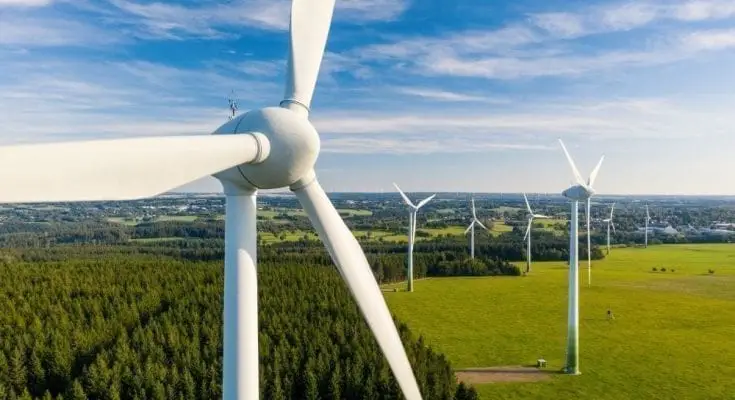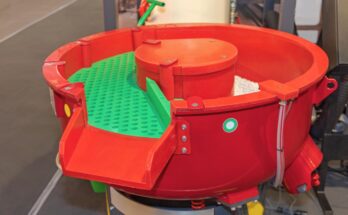Safe, green energy has evolved over the beginning of the new millennium, bringing new sources to us and further innovating old, well-known sources such as wind power. Wind turbines have become a staple energy producer on highways, farms, and even the ocean. These goliaths of the renewable energy world may seem imposing upon closer inspection, but they have plenty of fail-safes that keep them standing even during storms and high winds. Even so, you may find yourself asking one thing after seeing these gentle giants’ red lights blinking calmly during inclement weather: how does a wind turbine stay on the ground?
Locked Down in Severe Weather
When the weather becomes too severe for a wind turbine to handle, the system will feather and, in some cases, lock the blades. Feathering of a wind turbine rotates the blades to reduce the surface area affected by winds. Instead of the flat end of the blade facing vertically to catch the wind, a feathered turbine blade will instead face horizontally to avoid the high wind. The turbine itself will remain facing the direction of the wind.
Each wind turbine has a threshold at which the blades will automatically feather, such as sustained winds of 55mph. In some cases, the blades will lock up to weather the storm. Once the severe weather has passed, the blades will unfeather, and regular energy production will resume.
A Sturdy Foundation
Just as your home needs a solid foundation to stay in one place, a wind turbine also requires a reliable foundation before it can get to work. The installation of massive underground concrete foundations keeps the turbine standing strong and plays a crucial role in how a wind turbine stays on the ground. However, concrete foundations are useless in areas where the soil is soft, unstable, or the geology of the area prevents massive underground disturbances. In areas of the country where large foundations are not possible, it is essential to use helical piers or a singular large pier to hold the turbine to stable ground. With its foundation attached to sturdy earth far beneath the shifty surface and its base covered in soil and concrete, the turbine faces little risk of falling or failing.
Offshore Wind Farm Innovations
Sometimes, the question isn’t about the grounding of a wind turbine but rather how a wind turbine stays afloat in the ocean. Many countries, such as the United Kingdom and Germany, have a reliable source of wind energy from offshore wind farms. In the United States, we only have one wind farm off the shore of Rhode Island—the Block Island Wind Farm. Engineers are currently developing life-changing technology that will allow U.S. wind farms to survive the force of a hurricane. With turbines that can withstand hurricanes, we can harness the previously unutilized power that the daytime ocean winds provide us.
FAQ
How does a wind turbine handle extreme weather?
When the weather becomes too severe for a wind turbine to handle, the system will feather and, in some cases, lock the blades. Feathering of a wind turbine rotates the blades to reduce the surface area affected by winds. Instead of the flat end of the blade facing vertically to catch the wind, a feathered turbine blade will instead face horizontally to avoid the high wind. The turbine itself will remain facing the direction of the wind.
How does a wind turbine stay on the ground?
Just as your home needs a solid foundation to stay in one place, a wind turbine also requires a reliable foundation before it can get to work. The installation of massive underground concrete foundations keeps the turbine standing strong and plays a crucial role in how a wind turbine stays on the ground. However, concrete foundations are useless in areas where the soil is soft, unstable, or the geology of the area prevents massive underground disturbances. In areas of the country where large foundations are not possible, it is essential to use helical piers or a singular large pier to hold the turbine to stable ground. With its foundation attached to sturdy earth far beneath the shifty surface and its base covered in soil and concrete, the turbine faces little risk of falling or failing.



